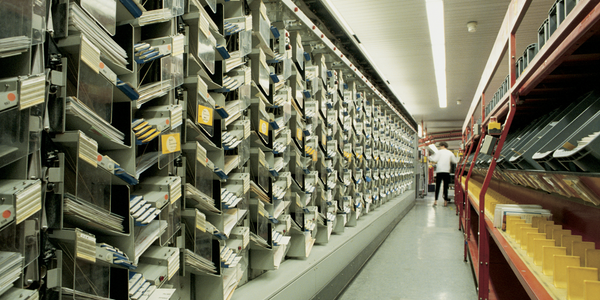Download PDF
The KLM Open - New application drives mobile usage rates and improves the live experience for fans
Technology Category
- Infrastructure as a Service (IaaS) - Cloud Computing
- Platform as a Service (PaaS) - Application Development Platforms
Applicable Functions
- Sales & Marketing
Use Cases
- Real-Time Location System (RTLS)
Services
- Cloud Planning, Design & Implementation Services
- Software Design & Engineering Services
The Challenge
The KLM Open, one of the oldest golf tournaments in the European Tour, was facing a challenge as large-screen, high-definition television was driving an increasing number of fans to watch sports at home rather than in person. To counter this trend and enhance the live experience for fans, the KLM Open wanted to provide a new and more interactive mobile application. However, they lacked the infrastructure and expertise needed to develop and deploy such a solution. The goal was to provide fans attending the tournament with real-time access to leaderboards, players’ locations and maps that show the user’s current location and how to get to various points of interest.
About The Customer
The KLM Open is one of the oldest golf tournaments in the European Tour. Founded in 1912, the event is located in Amsterdam, the Netherlands. Originally known as the Dutch Open, the tournament is held every September at Kennemer Golf & Country Club. The event attracts an average of 45,000 visitors, making it a significant event in the European golfing calendar. The KLM Open is known for its commitment to providing an excellent experience for fans, both those attending in person and those watching from home.
The Solution
To address the challenge, the KLM Open implemented a new mobile application developed using IBM's suite of products and services. The solution involved assigning a GPS tracker to each flight—a term for a group of golfers—to carry during the tournament. The flight’s location data is transmitted to a cloud infrastructure, specifically IBM Cloud Services: SoftLayer. This data is then combined with scores and other media content, providing fans with real-time access to leaderboards, players’ locations, and maps that show the user’s current location and how to get to various points of interest. The application was developed using IBM Bluemix and IBM MobileFirst Platform Foundation Consumer Edition, and it runs on IBM WebSphere Application Server Liberty Core.
Operational Impact
Quantitative Benefit
Related Case Studies.

Case Study
Leading Tools Manufacturer Transforms Operations with IoT
Stanley Black & Decker required transparency of real-time overall equipment effectiveness and line productivity to reduce production line change over time.The goal was to to improve production to schedule, reduce actual labor costs and understanding the effects of shift changes and resource shifts from line to line.

Case Study
Jaguar Land Rover Speeds Order-to-Cash Cycle
At Jaguar Land Rover, vehicles physically move around the facility for testing, configuration setting, rework and rectification, leading to a longer search time to get each vehicle to its next process facility. The main goal is to minimize the vehicles' dwell time between end of line and the delivery chain which was previously a manually intensive process. Jaguar Land Rover's goal was to build on the success of an earlier RFID project and improve the efficiency of delivering vehicles to meet dealer orders.

Case Study
Improve Postal Mail and Package Delivery Company Efficiency and Service
Postal mail and package delivery company wanted to replace legacy yard management system, increase inbound and outbound yard velocity, improve priority parcel delivery time and accuracy, reduce workload and overtime, reduce driver detention and measure performance and utilization of yard resources.

Case Study
Hospital Management Solution
The Oncology Diagnosis and Treatment Center of Brasov wanted to give patients as much freedom to roam as possible, while at the same time ensuring optimal patient safety and security. The centre was in need of an adequate wireless voice communication and messaging solution that would give patients the confi dence that medical staff is always on call, and reduce stress levels of nurses and doctors when called in case of urgent need.
Case Study
Worker Tracking & Safety Monitoring in Construction
One of the main challenges facing the technology was to create a network within underground tunnels and another was to provide products that can withstand harsh working environment. The team used amplifiers to enhance bandwidth and Litum produced IP67-rated hardware that is durable for harsh working conditions.

Case Study
Samsonite Track&Go
Travellers spend their lives discovering new places and meeting new people from all around the world. It can be such a wonderful experience, but sometimes it can turn into a disaster when your luggage gets lost. In 2014 alone, more than 24 million pieces of baggage were lost. Fortunately, 95% of them were found and returned to their owners. However, that leaves more than 1 million items of baggage that have never been recovered.





